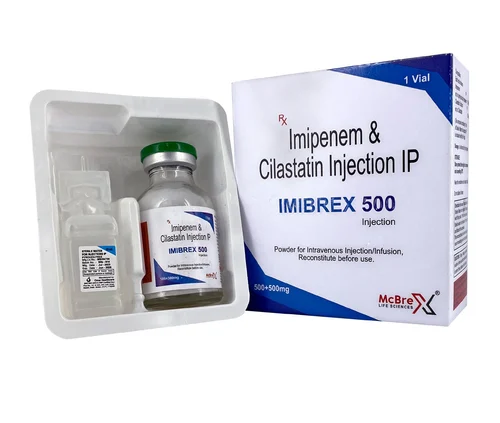
Chlordiazepoxide, commonly known by its brand name Librium®, is a medication used to treat anxiety, alcohol withdrawal, and other related conditions. It belongs to a class of medications known as benzodiazepines, which work by calming the central nervous system. Below is a comprehensive guide to understanding chlordiazepoxide, including its uses, mechanisms, dosages, side effects, antidotes, and a table listing popular brand names.
What is Chlordiazepoxide?
It is a benzodiazepine with anxiolytic (anxiety-reducing), sedative, hypnotic, and muscle-relaxant properties. Its primarily use is for the management of anxiety disorders and alcohol withdrawal symptoms.
Mechanism of Action
Chlordiazepoxide works by amplifying the effect of a neurotransmitter called gamma-aminobutyric acid (GABA). GABA has inhibitory effects on the central nervous system, which helps to reduce anxiety and produce a calming effect. By potentiating GABA’s activity, chlordiazepoxide helps in relieving symptoms like agitation, tension, and alcohol withdrawal symptoms.
Uses of Chlordiazepoxide
Doctors prescribe chlordiazepoxide for various conditions., including:
- Anxiety Disorders
It is commonly used for the short-term relief of anxiety, such as generalized anxiety disorder (GAD). Moreover, Chlordiazepoxide helps calm the excessive nervous activity associated with anxiety.
- Alcohol Withdrawal
Chlordiazepoxide serves as an effective treatment for mitigating the immediate symptoms linked to alcohol withdrawal. This includes agitation, tremors, and seizures. By stabilizing the nervous system, it prevents complications such as delirium tremens.
- Preoperative Anxiety
It is to alleviate anxiety before surgery or medical procedures, helping patients relax.
- Muscle Relaxation
Due to its muscle-relaxant properties, it’s use is for conditions associated with muscle spasms.
Dosage and Administration
Chlordiazepoxide is typically administered orally in tablet form. The dosage will vary depending on the condition being treated, the severity of symptoms, and the individual’s response to the medication.
Dosage for Anxiety
- Adults: Typically, 5 to 10 mg, 3 to 4 times a day.
- or debilitated patients: 2.5 mg, 2 to 3 times a day.
Dosage for Alcohol Withdrawal
- Initial dose: 50 to 100 mg, repeated every 1 to 2 hours as needed.
- Maintenance dose: The dosage is gradually reduced as symptoms improve.
Side Effects of Chlordiazepoxide
While effective, it can cause various side effects.
Common side effects include:
- Drowsiness
- Dizziness
- Fatigue
- Blurred vision
- Slurred speech
Severe Side Effects
- Respiratory depression
- Hypotension
- Ataxia (lack of muscle coordination)
- Memory impairment
- Depression or mood changes
Thus, consulting with a healthcare provider is of utmost importance before initiating the use of chlordiazepoxide, especially for individuals with a background of drug dependence or liver issues.
Contraindications and Precautions
Chlordiazepoxide should not be used in individuals with:
- Severe respiratory insufficiency
- Sleep apnea syndrome
- Acute narrow-angle glaucoma
- Severe liver disease
- Pregnancy (especially in the first trimester)
Precautionary measures:
- Use with caution in aged patients or those with a history of substance abuse.
- Avoid alcohol and other central nervous system depressants during treatment.
Overdose and Antidote
Signs of Overdose
Overdose symptoms include:
- Extreme drowsiness
- Confusion
- Muscle weakness
- Respiratory depression
- Coma
Antidote for Overdose
The antidote for chlordiazepoxide overdose is flumazenil (Romazicon®). Flumazenil is a benzodiazepine antagonist that works by reversing the sedative effects of benzodiazepines. Healthcare professionals should administer it in a controlled setting, and its use should be carefully monitored because of the risk of triggering seizures in some patients.
Drug Interactions of Chlordiazepoxide
Chlordiazepoxide can interact with several other drugs, potentially altering their effects or increasing the risk of side effects. Notable interactions include:
- Alcohol: Increased sedative effects, leading to respiratory depression.
- Other CNS depressants: Drugs like barbiturates, opioids, or other sedatives can enhance it’s effects, increasing the risk of respiratory depression.
- Cimetidine: May increase chlordiazepoxide levels in the blood, leading to increased sedation.
- Oral contraceptives: Can reduce the clearance of chlordiazepoxide, increasing its effects.
Popular Brand Names of Chlordiazepoxide
Below is a table listing popular brand names of chlordiazepoxide and their specifications:
| Brand Name | Form | Strength | Common Indications | Manufacturer |
| Librium® | Tablet | 5 mg, 10 mg, 25 mg | Anxiety, alcohol withdrawal | Pfizer |
| Chlordiazepoxide HCl | Tablet | 10 mg, 25 mg | Anxiety, alcohol withdrawal, preoperative anxiety | Mylan |
| Eskalith® | Capsule | 5 mg, 10 mg | Anxiety, muscle spasms | AbbVie |
| Anxiolytics® | Tablet | 5 mg, 10 mg | Generalized anxiety disorder | Teva Pharmaceuticals |
| Tranxene® | Tablet | 5 mg, 10 mg | Anxiety, alcohol withdrawal | Abbott Laboratories |
Note: The availability of specific brands may vary by country.
Conclusion
Doctors prescribe Chlordiazepoxide (Librium®) for anxiety and alcohol withdrawal. However, it is important to use this medication under a doctor’s supervision due to its potential for dependence and its interaction with other substances. While effective in managing symptoms, patients should be aware of possible side effects, overdose risks, and the appropriate antidote (flumazenil) in the event of an emergency. Thus, consulting a healthcare professional for personalized guidance and treatment is always advisable.




